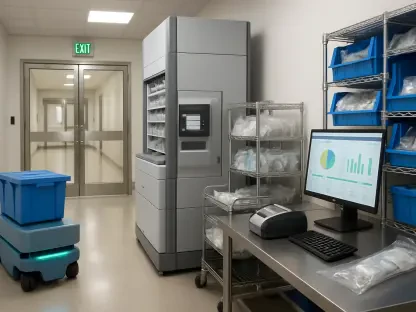In a groundbreaking move that could reshape the landscape of global healthcare, a major philanthropic organization has pledged an unprecedented $2.5 billion to advance women’s health initiatives, with a sharp focus on leveraging artificial intelligence (AI) in low- and middle-income countries. This substantial investment targets persistent challenges in maternal, menstrual, gynecological, and sexual health—areas that have long been neglected by mainstream medical research. Spanning through 2030, the initiative aims to bridge critical gaps in access and innovation, ensuring that women in underserved regions benefit from cutting-edge technology. By prioritizing equity in healthcare, this commitment underscores a growing recognition of the urgent need to address systemic disparities. It also sets a powerful precedent for how philanthropy can drive transformative change on a global scale, sparking curiosity about the potential ripple effects across industries and communities.
Harnessing Technology for Health Equity
This ambitious funding places a significant emphasis on integrating AI and mobile health platforms to revolutionize healthcare delivery in resource-limited settings. The goal is to support the creation of over 40 innovative products, ranging from advanced diagnostic tools to treatments for complex conditions like endometriosis and postpartum complications. Drawing on previous successes, such as partnerships that developed low-cost smartphone-based diagnostic tests, the initiative seeks to make obstetric and menstrual health solutions more accessible and affordable. By harnessing technology, the plan aims to impact billions of women worldwide, particularly in regions where traditional healthcare infrastructure falls short. Scalability remains a core focus, ensuring that these advancements can be adapted and implemented across diverse environments, ultimately reducing disparities in care.
Beyond the development of tools, the initiative prioritizes partnerships with technology firms to accelerate innovation and streamline the deployment of health solutions. Collaborations with industry leaders are expected to enhance the speed of product development, potentially easing regulatory hurdles that often delay progress in women’s health research. Analysts anticipate that this financial boost will attract private sector investment into niche areas like personalized gynecological care powered by AI algorithms. Such investments could redefine how healthcare providers approach diagnostics and treatment, tailoring solutions to individual needs even in the most remote locations. This tech-driven strategy not only promises immediate benefits but also lays the groundwork for long-term systemic change in global health equity.
Addressing Challenges and Diverse Perspectives
While the $2.5 billion commitment has been hailed as a game-changer, it is not without its share of challenges and critical viewpoints. Some experts question the prioritization of global health initiatives over other pressing issues like climate change, especially given the finite timeline of the funding, which is tied to a planned closure of the foundation by 2045. This deadline adds urgency to achieving measurable outcomes within a compressed timeframe, raising concerns about sustainability. Internally, efforts are underway to restructure operations and maximize impact, building on a 25-year legacy of grant-making to usher in a new era of women-centered research and development. Balancing ambition with practicality remains a key hurdle, as the scale of the challenge demands both innovation and efficiency in execution.
Additionally, the initiative faces scrutiny regarding its focus and potential blind spots. Critics argue that while the emphasis on technology is forward-thinking, it may overlook cultural or logistical barriers in low-income regions, such as limited internet access or resistance to digital health tools. There is also a call for broader stakeholder engagement to ensure that solutions are not only innovative but also culturally relevant and widely accepted. Despite these concerns, the funding signals a policy shift toward equity in health innovation, urging governments and NGOs to align their efforts with such transformative endeavors. The debate surrounding priorities and implementation highlights the complexity of addressing systemic inequities on a global scale, underscoring the need for adaptive strategies.
Industry Implications and Policy Shifts
For pharmaceutical and technology companies, this substantial investment opens doors to collaborative ventures that could fast-track the development and approval of groundbreaking health solutions. The influx of capital is expected to catalyze innovation in areas traditionally underfunded, such as menstrual health technologies, with projections of widespread adoption in developing regions by 2030. These partnerships could redefine industry standards, encouraging a shift toward solutions that prioritize accessibility and affordability. Beyond immediate product development, the initiative challenges competitors to match this level of commitment, potentially sparking a wave of investment in women’s health that extends far beyond the initial funding period. The ripple effects could transform how the private sector approaches global health challenges.
On a broader scale, the policy implications of this commitment are profound, highlighting the necessity for sustained investment in health equity across all levels of governance. It serves as a call to action for public institutions to complement philanthropic efforts with robust frameworks that support long-term change. By setting a benchmark for innovation, the initiative encourages alignment between public and private sectors to address entrenched disparities. The focus on technology as a driver of equity also prompts a reevaluation of regulatory processes, advocating for faster approvals without compromising safety. This dual impact on industry and policy underscores the potential for philanthropy to act as a catalyst, reshaping priorities and fostering collaboration on a global stage.
Building a Lasting Legacy
Reflecting on this historic $2.5 billion investment, it becomes evident that the effort marks a pivotal moment in global health philanthropy. The integration of AI and mobile health solutions into women’s healthcare in low-income nations represents a bold step toward addressing long-standing inequities. Partnerships forged with industry leaders accelerate the pace of innovation, while the push for policy alignment amplifies the impact of these advancements. Despite challenges and critical perspectives, the initiative sets a high standard for how targeted funding can drive systemic change, leaving an indelible mark on the landscape of maternal and gynecological care.
Looking ahead, the focus should shift to ensuring the sustainability of these efforts through strategic planning and external collaborations. Stakeholders must prioritize scalable models that can endure beyond the foundation’s timeline, empowering local communities to maintain and expand upon these health innovations. Governments and organizations are encouraged to build on this momentum by investing in infrastructure that supports digital health tools. By fostering a collaborative ecosystem, the legacy of this investment can continue to transform lives, offering a blueprint for how technology and philanthropy can intersect to solve some of the world’s most pressing health challenges.









